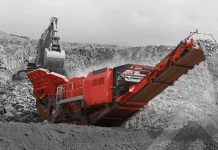API 5L X52 steel pipes are at the forefront of the oil and gas sector, representing dependability and strength in the conveyance of critical commodities. The American Petroleum Institute (API) governs these pipes, which are specifically constructed for seamless and welded applications, assuring the safe conveyance of oil, gas, and water over long distances.
The exceptional weldability of the steel makes it easier to build strong pipelines, which are critical to global energy infrastructure. API 5L X52 steel pipes are subjected to rigorous quality control techniques, such as chemical composition analysis, mechanical property testing, and strict inspections.
These pipes have a wide range of applications beyond the oil and gas industry, including offshore exploration, petrochemicals, water transportation, and infrastructure construction. The api 5l x52 steel pipes, denoted by the API monogram, indicate compliance with industry standards, helping to improve the efficiency and sustainability of global energy transportation networks.
Is API 5L X52 Suitable For Conveying Water?
Yes, API 5L X52 is appropriate for carrying water. This American Petroleum Institute (API)-)-specified steel grade is well-known for its adaptability and is widely employed outside of the oil and gas industry. API 5L X52’s strength and resistance to corrosion make it a good choice for building water pipes, delivering a dependable and efficient supply for a variety of applications.
Dynamic Characterization Of API 5L X52 Pipeline Steel
The dynamic characterization of pipeline steel is critical for maintaining the integrity and dependability of energy transportation infrastructure. API 5L X52, a grade designated by the American Petroleum Institute (API), is critical in the oil and gas industry, where pipelines must withstand dynamic loading conditions. This article examines the dynamic properties of API 5L X52 pipeline steel.
Impact Testing
Impact testing, particularly Charpy V-notch (CVN) testing, is an important feature of dynamic characterization. This test is performed on the API 5L X52 to determine its toughness and ability to absorb energy under rapid loading conditions. During the test, a notched specimen is subjected to a swinging pendulum to simulate an impact. The amount of energy absorbed before fracture is evaluated, which is an important characteristic for assessing the material’s resilience to rapid loading.
Toughness and Ductility
The impact test results are closely related to the toughness and ductility of API 5L X52. Toughness refers to the material’s ability to absorb energy and deform plastically before fracturing. Ductility refers to a material’s ability to withstand severe deformation without breaking. These qualities are required to survive dynamic loading situations, such as those encountered during pipeline shipment and installation.
Strain Rate Sensitivity
Dynamic loading frequently involves variable strain rates, and the strain rate sensitivity of API 5L X52 is an important part of its dynamic characterization. Strain rate sensitivity describes how a material’s mechanical properties, such as yield strength and tensile strength, alter in response to varied rates of deformation. Recognizing this sensitivity is critical for forecasting the steel’s behavior under dynamic loads.
High Strain Rate Testing
During high-strain rate testing, specimens are subjected to rapid loading conditions that simulate real-world dynamic situations. Split Hopkinson Pressure Bar (SHPB) testing is used to determine how the material responds to high strain rates. These tests provide vital information on API 5L X52’s dynamic behavior, which helps to develop reliable models for predicting its performance in dynamic circumstances.
Fatigue Resistance
Pipelines are subjected to cyclic loads throughout their operating life, which can lead to fatigue failure if the material is unable to endure repeated loading and unloading. The fatigue resistance of API 5L X52 is assessed during dynamic characterization using fatigue testing. Specimens are subjected to numerous loading cycles to imitate the conditions encountered during pipeline operation.
Resilience under Vibrations
Vibrations are another dynamic aspect that pipelines may encounter, particularly in seismically active regions or as a result of machine-induced vibrations. API 5L X52’s capacity to endure and absorb vibrations is an important factor in its dynamic characterization. Resilience to vibrations ensures the pipeline’s structural stability over its operational life.
Influence of Temperature
Temperature’s influence on the material’s behavior is also taken into account during dynamic characterization. API 5L X52 is frequently subjected to fluctuating temperatures during shipment and operation. Understanding how the material’s dynamic properties change with temperature changes is critical for assuring its performance in a variety of environmental circumstances.
Summary
The dynamic characterization of API 5L X52 pipeline steel is a multifaceted process. The data produced from dynamic characterization helps to continuously enhance pipeline materials, allowing for the construction of structures that can survive the dynamic demands of today’s energy landscape. As technology progresses, continued research and development in dynamic characterization will improve our understanding of pipeline steels and their performance in dynamic operational situations.











